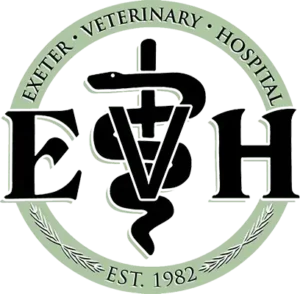Laser Therapy For Pets
We are delighted to offer laser therapy as one of our treatment choices at Exeter Veterinary Hospital. Although this seems like something out of a science fiction film, lasers have been used in human and veterinary medicine for many years. This post features a local Exeter, CA vet discussing laser therapy and its uses in veterinary medicine.
Veterinary Laser Therapy
Veterinary laser therapy is a medical procedure that uses concentrated light to promote healing and relieve pain in animals. This non-invasive method is routinely used in veterinary facilities to help pets recover and improve their quality of life.
Laser therapy, as the name implies, is a form of physical treatment for pets that employs lasers. While this may appear daunting, the lasers used are light-based and do not cut or pierce the skin.
How Do Lasers Work?
Let us explain the concepts underlying laser operation. The technology works by utilizing light. Indeed, ‘Laser’ is an acronym for Light Amplification of Stimulated Emission of Radiation.
They may produce three different sorts of light beams. Monochromatic refers to a single wavelength. The term coherent relates to electromagnetic radiation. Finally, there’s collimation. This type of laser produces photons that are condensed into a single beam of light. Coherent and collimated lasers can be focused with extreme precision. This is where the term “laser focus” originated.
Lasers fall into four categories. Class 1 is similar to what you see with barcode readers at food stores. They are the weakest. Class 4 is the most powerful; it can make incisions. Class 3 is the most widely used category in therapeutic settings.
That is, of course, the short version; for further information, consult your veterinarian.
What Is The Basis Of Laser Therapy?
Photobiostimulation is the underlying idea of laser therapy. The laser’s light can travel deep into the cells. This starts a chemical reaction, or, more specifically, a series of reactions. These include the production of endorphins, the body’s natural painkillers; increased circulation; decreased inflammation; quicker healing time; relief of inflammation and accompanying pain; and promotion of bone healing. That is an impressive list!
The treatment’s effects and advantages are frequently cumulative. Many pets continue to improve with each consecutive treatment.
What Are The Conditions That Laser Therapy Can Treat?
One reason we value laser therapy is its incredible adaptability. This medication is frequently used for dogs that are experiencing bone and joint pain as a result of arthritis, hip dysplasia, or other problems. It can also be used to treat a variety of other ailments.
That list includes the following items:
- Osteoarthritis
- Intervertebral Disc Disease
- Lick Granuloma
- Cellulitis
- Arthritis
- Ear issues
- Sprains and strains
- Muscle Atrophy
- Skin issues
- Nerve problems
- Tendon and ligament issues
- Musculoskeletal abnormalities=
- Hip Dysplasia
- Gingivitis
- Degenerative joint disease
- Injuries
- Dental treatments
- Inflammation
- Inflammatory bowel disease
- Bone Fractures
- Recovery From Injury
Those are just a few examples. As you can see, laser therapy can effectively help pets with a wide range of challenges. For more information, please consult your Exeter, CA veterinarian.
What Are The Advantages Of Laser Therapy?
Laser therapy has distinct and extraordinary features, many of which make it a perfect alternative for treating a variety of medical conditions in pets.
Let’s look at some of the more essential ones:
It’s Pain-Free
When considering any type of animal care, one of the first priorities should always be the pet’s comfort. Laser therapy excels in this specific area. There is absolutely no discomfort! Many pets appear to appreciate the treatments. It is not unusual for our patients to relax throughout their appointments. Some may even go to sleep! (This is always super cute.)
No Incision
Laser therapy is a non-invasive treatment method. No incision is required. Indeed, it frequently accelerates the healing process for wounds and incisions.
No Known Side Effects
Laser therapy is exceptionally safe. In reality, there are no known adverse consequences. That in itself is a huge advantage!
Quick Appointments
Laser therapy sessions are usually brief. Most appointments last 20 minutes or less. Even those with busy schedules are typically able to schedule sessions.
Each of our patients is unique, and their therapies should reflect this. Laser therapy can be used in a variety of treatment methods. For example, one dog may benefit from accelerated wound healing during surgery recovery, while another may benefit from a reduction in inflammation. This versatility frequently allows us to provide the most complete and efficient alternatives available while minimizing discomfort for our patients. We can also adapt treatment schedules as needed.
No Anesthesia
Although anesthetic is generally safe, it should only be used when absolutely required. It’s not required for laser therapy. A sedative may be administered before treatments, but anesthesia is not required.
There’s No Recovery Time
One of the big reasons that laser therapy is noteworthy is because it is painless and noninvasive. Both of these things add up to another substantial benefit. Your pet will not require any particular attention, except perhaps a sleep and a few extra forehead scritches. (A new toy or delectable treat is not required, but it would be greatly appreciated.)
How Often Should Pets Have Laser Therapy Treatments?
The specific treatment program for your pet will depend on the specific issue or condition they are being treated for. Daily treatments may be most beneficial if your pet is in pain or has an urgent condition. Another dog might benefit from two or three lessons a week.
Typically, the sessions would taper down and then come to an end once the maximum benefit had been obtained. Your veterinarian will monitor the results and modify their advice accordingly.
Will My Dog Feel Tired After Laser Therapy?
It is usual for our canine companions to be fatigued after their workouts. This circumstance can be explained in a variety of ways. The most significant element is the reduction in pain and stiffness. That can be extremely relaxing. The alleviation may also help with deep, restorative sleep. Make sure your pet has a comfortable bed to relax in.
Is Laser Therapy Effective?
Absolutely! This may be the most important part of all. Laser therapy is not only effective, but it can provide spectacular results! It always makes us happy to see a once-stiff old dog rekindle its playful personality or simply relax as their pain lessens. Finally, we want to guarantee that all of our animal companions are healthy and comfortable for as long as possible.
However, laser therapy may not be the best option for all pets. Treatment alternatives should be provided based on the specific circumstances of each instance. If you believe your four-legged companion could benefit from our services, please contact us. There is always merit in learning more!
Finally, laser therapy is a painless and noninvasive treatment option that can help pets with a variety of medical issues. Although it is primarily used to help arthritic dogs, its adaptability allows it to be applied to a wide range of different problems.
Contact Your Veterinary Clinic in Exeter, CA
Do you think your pet could benefit from laser therapy? Are you interested in learning more about it? We welcome you to contact us at your Exeter, CA pet hospital. We are here to serve you!





!Social Icons